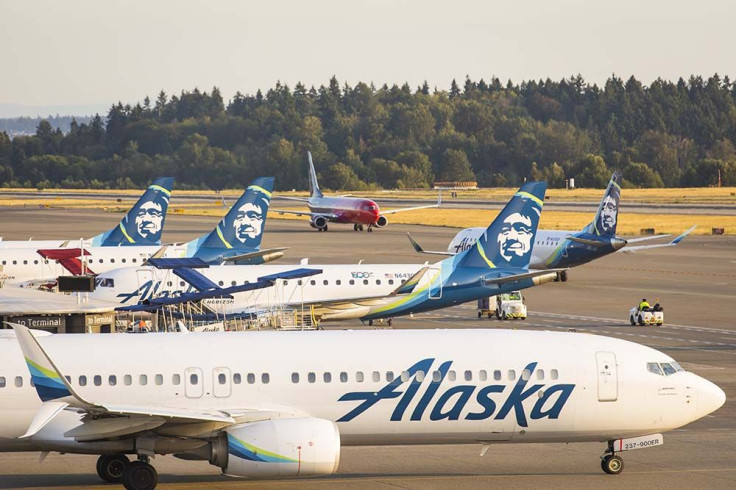Alaska Airlines Plans To Cut Up To 3,000 Jobs, Seeks To Resize, Streamline Operations

KEY POINTS
- Among pilots and flight attendants, those having the least seniority will be furloughed first
- More than 6,000 Alaska Air staff have already taken voluntary leave
- Alaska Air received about $992 million in relief aid from the U.S. government
Alaska Airlines is preparing to cut up to 3,000 jobs and streamline its operations in response to a demand collapse brought on by the covid-19 pandemic.
The airline has a total of 23,000 workers, including 2,000 based in Alaska.
"Things will likely not go back to pre-covid levels in the next 12 months," said Alaska Air Group president Ben Minicucci. "We see a smaller company in 2021. We see a smaller industry, in fact. We think we'll be smaller by about 3,000 people."
Cole Cosgrove, an Alaska Air spokesman, said furloughs will be necessary. Among pilots and flight attendants, those having the least seniority will be furloughed first – probably in October at the earliest.
“It’s really demand-driven,” Cosgrove said. “We are working with the labor union leaders over the next probably two months, to try and figure out what everything will look like.”
More than 6,000 Alaska Air staff have already taken voluntary leave.
The job cuts will occur despite the fact that Alaska Air received about $992 million in relief aid from the U.S. government. That cash is expected to protect jobs through the end of September – just prior to the layoffs.
"There are ways to navigate the uncertainties that don't require actual pilot furloughs and provides the company flexibility," said Capt. Will McQuillen, chairman of the executive council of Alaska's pilot union, the Air Line Pilots Association. These measures include incentives for early retirement or longer term leave, among others.
"It can be a win/win," he said.
Minicucci also said Alaska Air is in negotiations with Boeing (BA) about when it will receive its first 737 MAX jets once flights have fully resumed.
Alaska Air has ordered 32 MAX-9s, with options to purchase an additional 37 aircraft.
In March, the carrier planned to take three of the jets this year, with another seven MAX in 2021. But now Minicucci said he’s not sure if the airline will take delivery of any jets this year.
"We haven't made firm decisions," he said. "Long term, we'll have MAXs in the Alaska [Air] fleet, for sure. We're big Boeing supporters."
Indeed, the covid-19 pandemic has halted the airline’s aggressive growth strategy.
As recently as late February, Alaska Air planned to buy 200 new jets over the next decade. Then the pandemic hit and sapped air travel demand.
"It was like someone had their hand on a valve and just turned off the valve," said Minicucci. "We went from carrying 130,000 passengers a day to a trough of just 5,000 a day."
Minicucci noted air traffic has since climbed back to about 24,000 passengers per day, however revenue has plunged 80% compared to the prior year.
Minicucci is pessimistic about the return of business and international travelers, the carrier’s most profitable markets.
"We don't see that coming back either in the fourth quarter or into next year," Minicucci said.
The airlines' total seat capacity, he said, will be 40% of last year's numbers in July, and about 50% in August.
"We see revenues down 20% to 35% in 2021," he added. "[If] we see demand improve and restrictions being lifted ... if there's an opportunity to grow, Alaska [Air] will grow. We're trying to be optimistic, yet also brutally honest and realistic."
For now, the airline is bleeding money -- spending $5.5 million more each day than it takes in.
Minicucci warned if the company does not address it cash flow woes, "the debt hole will be so big it will limit our ability to buy airplanes in future. The quicker we stop burning cash, the quicker we can start rebuilding.”
© Copyright IBTimes 2025. All rights reserved.





















